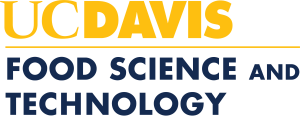A. Specific learning outcomes. At the end of the course students will be able to
- Describe and discuss the processing of foods in terms of unit operations.
- Develop and solve mass, energy and momentum (i.e., force) balances for unit operations.
- Analyze piping networks and select appropriately sized pumps for given operating conditions using mechanical energy balances.
- Explain various water treatment and by-product handling methods and calculate metrics used to characterize wastewater quality.
- Evaluate mass and energy balances in processing equipment (i.e., heat exchangers, refrigeration equipment, packaging materials)
- Calculate unsteady-state heat transfer in food products using Heisler charts.
- Calculate freezing rates in food products given food and freezer properties.
- Model food dehydration processes using mass and energy balances in conjunction with psychrometric charts.
How this course addresses IFT core competencies:
Senior-level course:
This course teaches fundamental engineering principles related to heat and mass transfer in food processing unit operations. It addresses many aspects of the food processing and engineering core competency area, including mass and energy balances, thermodynamics, fluid flow, and heat and mass transfer in the context of heating, drying, mixing, freezing, pumping, and other unit operations. Furthermore, it describes water and waste management strategies. This course complements the practical experience provided by the food processing laboratory course, FST110L.
B. Tools used to assess program outcomes:
Bloom’s Levels I-VI.
Homework assignments, discussion section problems, and exams are used to assess student knowledge. All problems emphasize practical application of the material and present problems that could be encountered in actual food processing operations. For example, student are asked to size a pump for a given application or determine the drying time for a particular product in a given type of dryer. Discussion section problems provide an opportunity to explore more complex problems, such as heat and mass transfer in products that do not have simple geometries. Two midterm and one final exam are used to measure individual performance on each of the intended learning outcomes.
C. Brief summary of assessment results to date:
Students submit evaluations of the both the course and instructor(s) each time the course is offered. These responses are used to improve course content and the way content is taught. Students have indicated that the material is best learned through examples. As a result of student requests, a larger library of non-graded practice problems will be made available to students to assist with studying. Recently, water and energy efficiency concepts have been more woven into the course material. Based on discussions among the instructors along with student feedback, emphasizing sustainable water and waste management practices will become a more prominent aspect of the course going forward.
